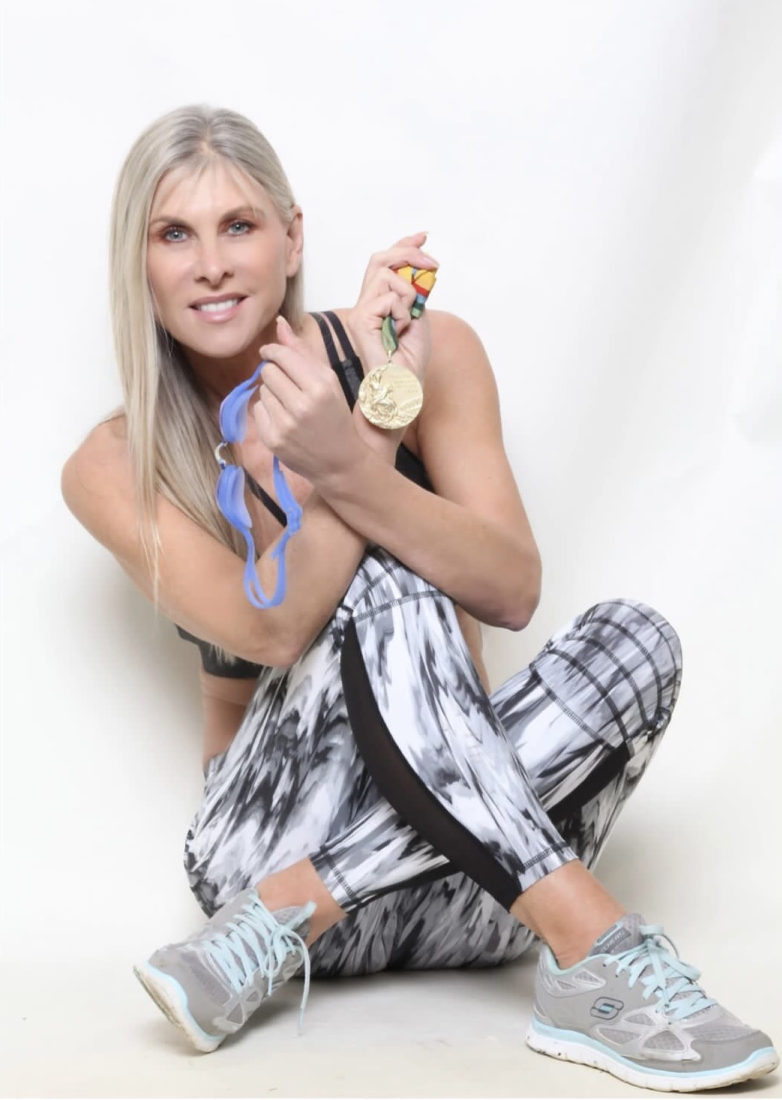
Editorial – This week, the spin of wheels overtook the swing of arms in my daily focus courtesy of British sport having to think about the nature of Fair Play as its own version of the Lia Thomas saga.
The drama was cut shot in cycling when the UCI stepped in to tell British Cycling that Emily Brigdes, who as Zach raced on Britain’s Under-23 squad as a man, could not race in what would have been a first race for the athlete among women. That may have spared cycling the vile extremes of a debate in swimming with deep red threads to woeful history. . This explanation in The Times explains why at a time when swimming awaits “a better answer” at global level:
The strength of the reaction against the inclusion of a transgender athlete in cycling — Bridges won the men’s points race in the British Universities’ Championships last month — and criticism of British Cycling’s transgender policy, along with significant disquiet among riders due to race against Bridges, has prompted the governing body to call for a coalition of interested parties to “find a better answer” on the subject of transgender athletes.
Swimming is waiting for a new policy and attached rules for aquatics from FINA and in this piece in The Times, I set out the direction of travel, with USA Swimming rules that FINA’s panel of experts and the leadership group helped to shape, indicating that the bar for trans inclusion in the female category in sport is about to be raised high enough to ensure no boy grown through puberty to man can enter women’s competition without years of process that stretches to at least three years of testosterone reduction therapy and a need for the athlete to show evidence that
I spoke to Sharron Davies, the British medley ace who might have been Olympic champion but for the asterisk ahead of her at the Moscow 1980 Games, who might have been European Champion but for the asterisks ahead of her, who was a silver and bronze medallist at global and continental levels and a Commonwealth champion in waters free of the poison of Oral Turinabol. The words Sharron Davies spoke to me can be read here. She notes: “People ask me about ‘lost gold’ but it’s about lost medals of any colour, lost places in finals, lost qualification, lost chances at every level.” And she concludes:

We need an open category that makes clear provision for inclusion and then a protected female classification. I hope that’s what’s meant when they talk of a standard that’s easy to understand. Mitigating every biological male advantage is the only way, otherwise it’s like saying “we allow a little bit of doping”, which isn’t allowed in men’s sport so why should it be allowed in women’s sport in another name.
Sharron Davies in The Times – Photo: Sharron Davies with the Olympic silver that her father and daughter sprayed gold one Christmas to reflect the injustice of the GDR era fulled by steroids that androgenised girls
When I Facebooked the links to the stories at The Times to which I contributed, I was asked “… how do they define Fair Play?” It’s a great question. We will all have different takes on it, subtle to gulf like.
Here Is My SOS Take On Fair Play In The Inclusion Debate

I can’t vouch for precise definitions of Fair Play that others may chose in their own words but this is my take, which I assume is not far away from the take of many others but not all.
In the male and female population, the spectrum of human nature is wide, differences physical and mental broad and deep. In sport, you have to have a way of differentiating between biological men and biological women for what I see as obvious reasons.
Fair Play in that context means this, for me: clean sport that follows anti-doping rules and disallows what is patently unfair.
Within the male and female categories, widely recognised for all of swimming history until very recently, as meaning biological sex, not gender identity, the spectrum is deep and wide when it comes to nature and nurture and honing and access to best coaching and facilities and diets and lifestyles. There’s much in the mix for some to point to as being ‘unfair … so what’s the problem with trans inclusion …’, the thought stopping well shy of where it would need to go to tick the Fair Play box. The economics, access, tradition, culture and historic trail that underpins all of that are not sports specific: they reflect the state of the world.
The trans-inclusion debate is also linked to that wider world, through the development of understanding, societal changes and extension of rights to sections of society that have not been recognised by the rules and laws and red and grey lines that provide the framework within which we live, in a variety of forms around the world.
What that wider world does not always appreciate, nor even understand, is the nature of sport and the reasons why biological sex matters.
The complex canvas in sport includes elite men who are No1 and those at No600, 800 and more, who are around 10-12 per cent slower than No 1 in event X, for sake of argument.
Same picture among women. Within those spectrums, it is widely accepted that Fair Play is in play.
There is a very different kind of 12 per cent, one that represents the gap between the best man and the best woman in event X. A boy grown through puberty to man before transition, a decade of male development in the tank, may lose strength through testosterone reduction but that is only a part of a complex, bigger picture of the difference between male and female development, some of which is hugely significant in sport. Where does Fair Play tip to Unfair?
If the person making the transition is bound to be the local librarian, the CEO of Apple, an astronaut, the butcher, the baker, the candlestick maker, and so on and so forth, it may make no difference whatsoever and it may well be regarded as discriminatory to think otherwise.
In sport, the presence of an athlete with years of male development in the tank since puberty makes a huge difference. Nothing can fully mitigate for a decade or so of male development of the kind significant in sport.
So, we have to decide where the red line of Fair Play should be in a realm where sex, biological sex, matters.
There is science and there is debate (see links below to SOS coverage) but when I see a man outside the global top 800 on mid-distance pace in season 1 make a transition and appear in season 3 as a woman at No 1 in NCAA (500 yards) and travelling at a (400m) pace good enough for global top 10 or 20 at most, I see a massive change of status.
There is only one explanation for that: male advantage.
Whatever the spectrum of Fair Play may be within the human population and among men and among women in sport, I know unfair play when I see it and I see just one cause.
Inclusion must mean either an open category or, in the absence of a specific open category, trans athletes must race with men when it comes to racing in the category of gender identity that requires a TUE [Therapeutic Use Exemption] to take drugs on the banned substances list as part of their transition process or racing as an athlete with male advantage, even after testosterone reduction.
As a man, like just about every other man out there, I could never compete with swimmers such as Phelps and Thorpe and many others at the peak end of peakiest performance but I never once felt that was unfair despite training 4-5 hours a day for over a decade. I enjoyed most of that and continue to enjoy and utilise the lifelong benefits of all those years and all that effort.

I never felt that gap from me to Rowdy Gaines, me to Brian Goodell, me to Roland Matthes and John Naber, two of my childhood heroes of the pool, me to David Wilkie, me to Michael Gross, me to Alex Baumann, and on and on, was unfair. Indeed, it was perfectly Fair Play, just as it would be Fair Play if any of them were ever to have taken me on at filing 1000 relatively cohesive and intelligent words to the sports desk on my newspaper from a live event 20 minutes or less after the swimmers’ clock stopped and mine started.
My best times were mostly faster than those of Sharron Davies at some stage late in my career after testosterone had done its work alongside mine but here’s the thing: she’s a woman and she’s a much better swimmer than me.
That’s Fair Play. Fair Play is not transphobic. Fair Play is the many categorisations that already exist in sport, in swimming. Fair Play in swimming also means keeping those born boys and grown through puberty to men away from those born girls and grown through puberty to women. Fair Play is recognition that the female category we call ‘women’ in sport needs protecting in a way that draws a clear red line at male advantage gained through male development that kicks in with a vengeance at puberty.
Related SOS coverage:
- Time To Drop Testosterone Nostalgia, Tucker tells Coe, In Debate About Transgender Inclusion In Women’s Sport
- Nancy Hogshead-Makar On Trans Inclusion, Part 1: ‘Fight Or Resign Yourself To Sexism & How That Plays Out In Women’s Sport’
- Trans Inclusion Part 2: Will Women Have All Lanes That Life & Rights Promise Them By The Time Regulators Are Done Deciding?
- FINA Intends to Set Simple “Industry Standard” Policy That Strikes “Right Balance Of Inclusion & Fairness” For Women & Trans Athletes
- Emma Weyant Gets Virginia Sorority Of Success Started As 1st Woman Home In NCAA 500y Free Before Cuomo, Douglass, Walsh & Walsh MaKe It A Cavaliers Riot
- Sex Matters In Sport: 3,000 Athletes Among More Than 5k Who Signed Petitions Calling On Fair Play For Women In Transgender Inclusion Debate
- IWD2022 – How The Meaning Of Inclusion Has Been Manipulated To Turn Women’s Sport From Fair To Foul Play
- The 200 Free Time Trial That Became A Yardstick Of How Much Poison Is Being Poured In The Women’s Swimming Pool
- Fond Of Women’s Sport: Dr. Emma Hilton & The Science That Shows Why Biological Sex Not Gender Choice Says Who Swims As Man Or Woman
- A waking nightmare for women’s sport
- Of Rogues Looking To Create & Exploit Loopholes – a 30-year campaign: FINA Sends Strong Message In Reform Process By Stripping “Disgraced” GDR Dr. Lothar Kipke Of 1980s Honour 20 Years After Criminal Conviction
- When Will Men Deciding What’s Best For Women Get It? Fairness In Swimming Is About Biological Sex Not Gender Choice
- Where Transgender Rights Trounce Women’s Rights To Fair Play In Sport
- Penn Women’s Swim Team Urges College/Ivy League Not To Sue NCAA & Back Fairness In Women’s Sport With Sex-Over-Gender Rules
- Indecent Exposure Laws Cited In Letter To U.S. Legal Authorities Highlights Litigation Threat To Sports & College Bosses Blind To Women’s Rights In Transgender Debate
- Transgender Athletes: ‘Fairness & Safety Cannot Co-Exist’, So Create Universal Category Apart From Women, Says UK Sports Councils’ Equality Group
- Army Of High-Achievers Calls On Team Biden To Find Middle Way In Transgender Female Rules To Protect Integrity and Fairness of Women’s Sport